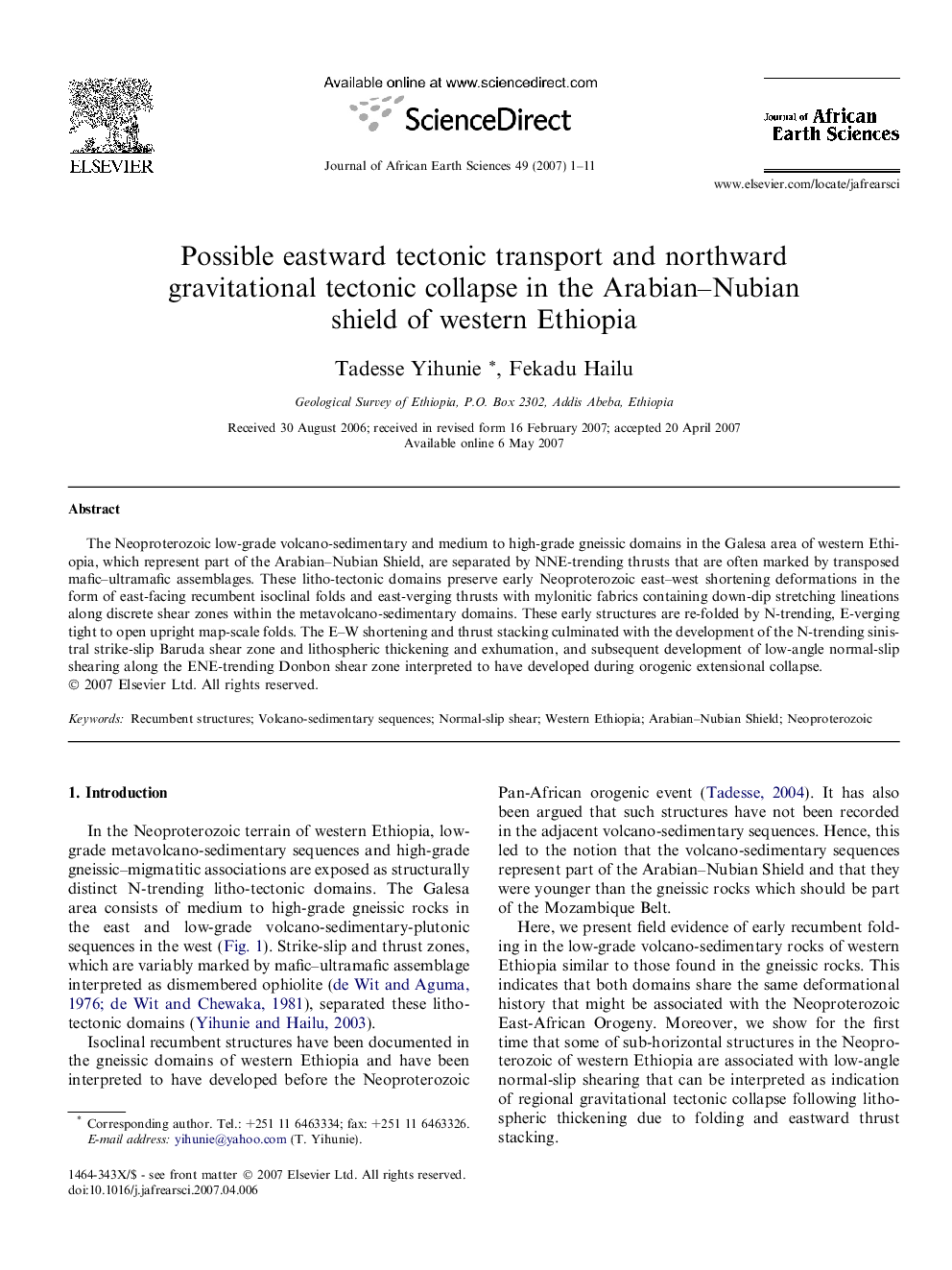| Article ID | Journal | Published Year | Pages | File Type |
|---|---|---|---|---|
| 4729685 | Journal of African Earth Sciences | 2007 | 11 Pages |
The Neoproterozoic low-grade volcano-sedimentary and medium to high-grade gneissic domains in the Galesa area of western Ethiopia, which represent part of the Arabian–Nubian Shield, are separated by NNE-trending thrusts that are often marked by transposed mafic–ultramafic assemblages. These litho-tectonic domains preserve early Neoproterozoic east–west shortening deformations in the form of east-facing recumbent isoclinal folds and east-verging thrusts with mylonitic fabrics containing down-dip stretching lineations along discrete shear zones within the metavolcano-sedimentary domains. These early structures are re-folded by N-trending, E-verging tight to open upright map-scale folds. The E–W shortening and thrust stacking culminated with the development of the N-trending sinistral strike-slip Baruda shear zone and lithospheric thickening and exhumation, and subsequent development of low-angle normal-slip shearing along the ENE-trending Donbon shear zone interpreted to have developed during orogenic extensional collapse.
